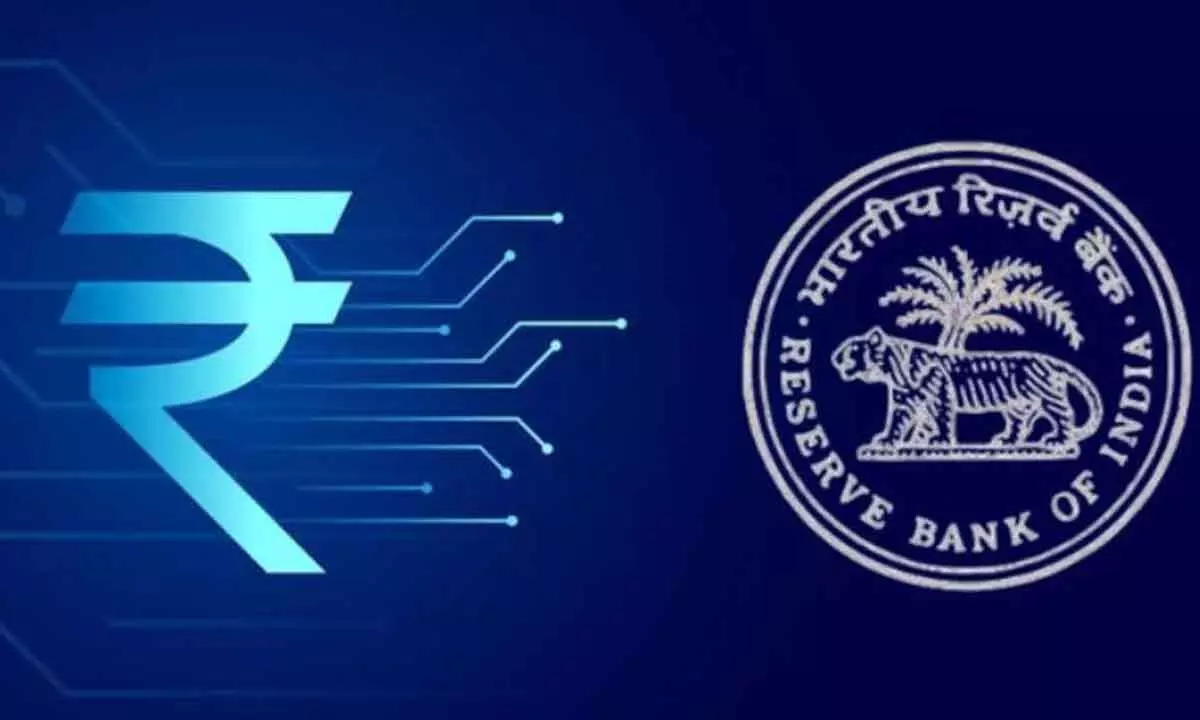The proposed eRupee will herald a new cashless gateway
The RBI, like many other Central banks across the world, has been exploring the need for a digital currency in India for several months, and, following the recommendations of an internal Working Group, launched a pilot last year to test out its created digital currency-eRupee.
image for illustrative purpose

The RBI, like many other Central banks across the world, has been exploring the need for a digital currency in India for several months, and, following the recommendations of an internal Working Group, launched a pilot last year to test out its created digital currency-eRupee.
eRupee, as the term suggests, is an electronic or digital form of the rupee, available on one’s smartphone, issued by RBI itself, designed to eliminate or vastly reduce the use of liquid cash. It seeks to do this by making eRupee legal tender, suitable for use for all financial transactions just as cash is able to do. Though it may appear to be similar to the likes of UPI, PayTm, Google Pay etc, it will differ from these payment solutions in a significant way, namely, it will be money itself and not a means of remitting money like the others.
Money is normally used to refer to cash and bank deposits, but since eRupee is also money, the definition of money would probably be expanded to include the latter as well, most likely in the M1 monetary aggregates of RBI.
One would be able to hold eRupee without a bank account. This is significant for a large number of people without bank accounts (currently 78% of Indians have bank accounts as per estimates), because it would enable them to conduct simple payment transactions in a secure manner without having to have a bank account. (Not surprisingly, banks have shown little enthusiasm for the digital currency.)
Moreover, it could be used to remit various forms of government assistance, such as LPG subsidy and education subsidy, similar to the manner they are remitted through bank accounts currently.
There are several reasons for RBI and other central banks to be interested in a digital currency. The first, as stated above, is to reduce use of cash and move all financial transactions to the digital mode. The second reason is disintermediation, namely the direct dealing between payer and payee, leading to faster and cheaper transactions. A third reason is expanding financial inclusion, by doing away with the need for having bank accounts. This is important for people living in places where bank penetration is low.
To the individual, eRupee will provide another channel of liquidity in addition to cash and bank accounts. Though no interest is proposed to be paid on eRupee balances, but being in the nature of cash, they will be much safer than bank deposits on account of being the direct liability of RBI, and fully guaranteed, unlike bank deposits where there is a limit of Rs five lakh on deposit insurance.
The challenges in fully implementing a digital currency are, however, not trivial. Not least because of the direct role of the central bank, the system will have to be protected from cyber and other threats and will involve considerable expenditure. Further, the goal of financial inclusion will be achieved only when smart phone and internet penetration in the country is deeper and everyone can open eRupee accounts. Though there are 750 million smartphone users in India, a majority of them are in urban areas. Insofar as the internet is concerned, it is estimated that only 50% of Indians are active users. There is however, a proposal to make eRupee available in offline mode, which would enable transactions in areas with no or low internet availability. However, this may not be an immediate prospect. Importantly, public education for adoption and use of eRupee will have to be done extensively if its usage is to increase, and massive publicity campaigns will have to be conducted.
Globally, almost a hundred central banks are seriously examining introduction of digital currencies, but there are some which are not yet fully convinced about it, the US being one of them. Even the RBI Governor has recently stated that CBDC is not a top priority for them. However, global trends do indicate a movement towards adoption of CBDC and moves are afoot to have interoperability between central bank digital currencies, which would greatly reduce risks in international trade and finance and give a push to its adoption.
The RBI pilot has now been running for 6-7 months and the number of users selected for the pilot has also increased. The findings of the pilot study will determine if and when the eRupee can be rolled out.
(The author is former chairman of Pension Fund Regulatory and Development Authority (PFRDA))

